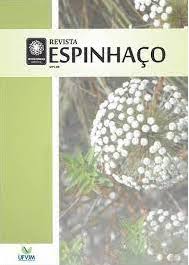Benthenic macroinvertebrates as bioindicators of water quality in a climate change scenario: a systematic review
DOI:
https://doi.org/10.5281/zenodo.10700733Keywords:
biomonitoring, benthic communities, global changesAbstract
The increasing anthropogenic changes in the terrestrial environment reflect significant impacts on freshwater ecosystems. One of the most efficient ways to carry out a diagnosis of the “health” of a given water body is through the use of water quality bioindicators, which we call benthic macroinvertebrates. These organisms quickly and accurately reflect minimal changes to aquatic environments due to their sensitivity to various types of pollutants and physical disturbances, in addition to being an essential component for the functioning and balance of aquatic ecosystems, acting in ecological processes of energy transfer and nutrient cycling. The present study aimed to carry out a systematic review of scientific works published on the Scopus platform in the last 10 years, evaluating the use of benthic macroinvertebrates as a biomonitoring tool for monitoring water quality, in the context of climate change. Of the 254 works sampled, only four were related to the study proposal, demonstrating an important knowledge gap to be explored in the coming years.
References
Beniston, M., Stoffel, M., 2014. Avaliação dos impactos das mudanças climáticas nos recursos hídricos das montanhas. ciência Ambiente Total. 493, 1129–1137.
Bertreaux, D; Reale, D; McAdam, AG; et al. (2004) Keeping pace with fast climate change: can artic life count on evolution? Integr Comp Biol 44(2):140-151
Brasil (2008). Deliberação Normativa Conjunta COPAM/CERH-MG N.. 1, de 05 de Maio de 2008. 1–30.
Brasil (2019). Agência Nacional de Águas (Brasil).
Bÿrziÿš B, Pejler B (1989) Occurrence of rotifers in relation to oxygen content. Hydribiology 183:156-172.
Callisto, M., Macedo, D. R., Castro, D. M. P. de, & Alves, C. B. M. (2019). Bases Conceituais para Conservação e Manejo de Bacias Hidrográficas. Cemig - Companhia Energética de Minas Gerais. https://doi.org/10.17648/bacias-hidrograficas
CETESB. (2012). Protocolo para o biomonitoramento com as comunidades bentônicas de rios e reservatórios do estado de São Paulo (CETESB (ed.)). https://cetesb.sp.gov.br/aguas-interiores/wp-content/uploads/sites/12/2013/11/protocolo-biomonitoramento-2012.pdf
Čiamporová-Zaťovičová, Z., Hamerlík, L., Šporka, F., & Bitušík, P. (2010). Littoral benthic macroinvertebrates of alpine lakes (Tatra Mts) along an altitudinal gradient: A basis for climate change assessment. Hydrobiologia, 648(1), 19–34. https://doi.org/10.1007/s10750-010-0139-5
Couvet D, Jiguet F (2008). Birds are tracking climate warming, but not fast enough. Continuar Royal Soc B Biol Sci 275:2743–2748.
Covich, AP; Fritz, SC; Lamb, PJ; et al. (1997) Potential effects of climate change on aquatic ecosystems of the Great Plains of North America. Hydrol Process 11:993-1021
Daneshvar, F., Nejadhashemi, A. P., Herman, M. R., & Abouali, M. (2017). Response of benthic macroinvertebrate communities to climate change. Ecohydrology and Hydrobiology, 17(1), 63–72. https://doi.org/10.1016/j.ecohyd.2016.12.002
Daufresne, M, Roger, MC; Capra, H; et al.; (2003) Long term changes within the invertebrate and fish communities of the upper Rhone River: effects of climate factors. Glob Change Biol 10:124-140.
Devictor V, Van Swaay C, Brereton T, Brotons L, Chamberlain D, Heliölä J, Reif J (2012). Differences in the climatic debts of birds and butterflies on a continental scale. Nat Clim Change 2:121 22. Domisch S, Jaehnig SC.
Domisch S, Araújo MB, Bonada N, Pauls SU, Jähnig SC, Haase P (2013). Modeling the macroinvertebrate distribution of European streams in climates futures. Glob Change Biol 19:752–762.
Durance, I; Ormerod, SJ. (2007) Climate change effects on upland stream macroinvertebrates over a 25-year period. Glob Change Biol 13:942-957.
Heller, Léo; Pádua, V. L. de. (2010). Abastecimento de água para consumo humano.
Isaak, DJ, Wollrab, S., Horan, D., Chandler, G., 2012. Efeitos da mudança climática nas temperaturas de riachos e rios no noroeste dos EUA de 1980 a 2009 e implicações para os peixes salmonídeos. Clim. Chang. 113, 499–524.
Koller, S. H., Couto, M. C. P. de P., & Hohendorff, J. V. (Orgs.). (2014). Manual de produção científica.
Lavoie D, Denman KL, Macdonald RW (2010) Effects of future climate change on primary productivity and export flows in the Sea of Beaufort. J Geophy Res Oceanos 115.
Linares, M. S., Callisto, M., & Marques, J. C. (2018). Compliance of secondary production and eco-exergy as indicators of benthic macroinvertebrates assemblages’ response to canopy cover conditions in Neotropical headwater streams. Science of the Total Environment, 613–614, 1543–1550. https://doi.org/10.1016/j.scitotenv.2017.08.282
Parmesan, C. (2006) Ecological and evolutionary responses to recent climate change. Annu Rev Ecol Evol Syst 37:637-669.
Post E, Forchhammer MC, Bret-Harte MS, Callaghan TV, Christensen TR, Elberling B, Ims RA (2009). Ecological dynamics in the Arctic associated with recent climate change. Science 325:1355–1358.
Salmaso, F., Crosa, G., Espa, P., & Quadroni, S. (2021). Climate change and water exploitation as co-impact sources on river benthic macroinvertebrates. Water (Switzerland), 13(19). https://doi.org/10.3390/w13192778
Stoddard, J. L., Larsen, D. P., Hawkins, C. P., Johnson, R. K., & Norris, R. H. (2006). Setting expectations for the ecological condition of streams: The concept of reference condition. Ecological Applications, 16(4), 1267–1276. https://doi.org/10.1890/1051-0761(2006)016[1267:SEFTEC]2.0.CO;2
Tuchman, NC; Wetzel, RG; Rier, ST; et al. (2002) Elevated atmospheric CO2 lowers leaf litter nutritional quality for stream ecosystem food webs. Global Change Biol 8:163-170.
U.S. Environmental Protection Agency (U.S. EPA). (2008) Climate change effects on stream and river biological indicators: A preliminary analysis. Global Change Research Program, National Center for Environmental Assessment, Washington, DC; EPA/600/R-07/085. Available from the National Technical Information Service, Springfield, VA, and online at http://www.epa.gov/ncea.ii
Zhu, K., Woodall, CW, Ghosh, S., Gelfand, AE, Clark, JS, 2014. Impactos duplos 733 das mudanças climáticas: migração florestal e rotatividade ao longo da vida. Glob. Alterar biol. 251–264.
Downloads
Published
How to Cite
Issue
Section
License
Copyright (c) 2024 Revista Espinhaço

This work is licensed under a Creative Commons Attribution-NonCommercial-NoDerivatives 4.0 International License.


